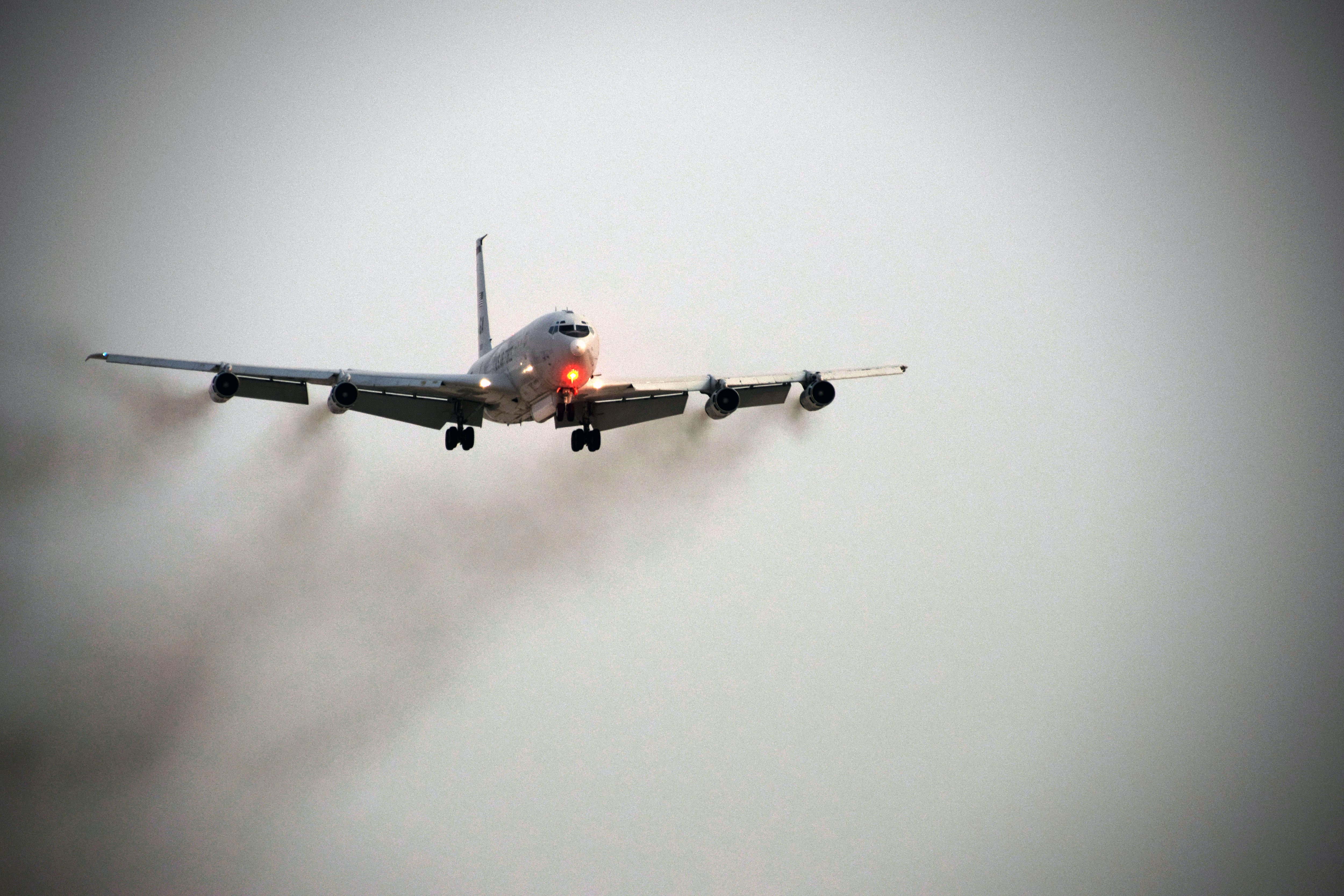NATIONAL HARBOR, Md. — The Air Force’s decision on whether to cancel the JSTARS recap program will be driven, in part, by whether the service can provide a similar capability by networking together its existing platforms and sensors, the head of Air Combat Command said Monday.
Although the service remains in source selection for an aircraft to replace its E-8 Joint Surveillance Target Attack Radar System, it announced last week that it was evaluating “alternative approaches for battlefield command and control that could be more effective in high-threat environments.”
If the Air Force decides to retain the capability of having a centralized battle management node in the skies, service leaders believe the current acquisition approach is the correct one, said Gen. Mike Holmes, head of Air Combat Command.
Otherwise, the Air Force might be best served by networking together its current collection of aircraft, drones and sensors in an interim capability that can bridge the service’s capability gap until it can field a more survivable system built to handle high-threat environments, he said.
“The question really is, how long do we continue to fund the GMTI [ground moving target indicator] capability in the classic way we’ve done it: with an integrated platform that has a sensor and air battle managers onboard,” that then communicate in the line of sight with people to take on tasks, he said during a Sept. 18 roundtable with reporters at the Air Force Association’s annual conference. “How much of our threat environment in the future will allow us to do that?”
RELATED

The service plans to explore future technologies and concepts of operation in its Advanced Battle Management System analysis of alternatives, which will begin next year.
Meanwhile, three teams are locked in a battle to provide the services’ JSTARS replacement: Boeing; Lockheed Martin, who is partnered with Bombardier, Raytheon and Sierra Nevada Corp.; and Northrop Grumman, which has teamed with Gulfstream and L3 Technologies. All three competitors were able to put forward separate proposals using radars from Northrop and Raytheon.
The Air Force plans to award a contract for the JSTARS recap program in March 2018, but Holmes acknowledged that date could be postponed.
“We’re on track to not have to” delay the award, he said. “If we’re in a debate with OSD [the office of the secretary of defense] and certainly with Congress … we’ll have to wait and see. I wouldn’t speculate.”
Georgia lawmakers have already made it known that will oppose any move to get rid of the legacy JSTARS fleet without having a replacement ready.
“[W]e were recently informed that the Air Force wishes to explore alternate intelligence and surveillance platforms instead of continued pursuit of the recapitalization of the E-8C Joint Surveillance Target Attack Radar System (JSTARS) fleet,” wrote Sens. Johnny Isakson and David Perdue, and Reps. Austin Scott, Sanford Bishop and Tom Graves in a letter to Defense Secretary Jim Mattis. “While the rationale has not yet been made known to us, cancelling or delaying would be ill-advised and directly impact our combatant commanders who employ this asset in theater.”
Speaking at a roundtable later Monday, Gen. Ellen Pawlikowski, head of Air Force Materiel Command, told reporters that the service is rebuilding the maintenance plan for the JSTARS aircraft, which would be rolled into a follow-on contract to Northrop Grumman, the prime contractor of the legacy fleet.
“That’s going to take a couple of years,” she said. “It’s going to take a while to re-do the maintenance plan because it hasn’t been done in a long time. And now that we know that we’re not falling off the cliff in a couple years, we’re going to really do the analysis to make sure we know what needs to be done and when.”
Speaking at a later roundtable, Gen. Ellen Pawlikowski, head of Air Force Materiel Command, told reporters that the service is rebuilding the maintenance plan for the aircraft, which would be rolled into a follow-on contract to Northrop Grumman, the prime contractor of the legacy JSTARS fleet.
“That’s going to take a couple of years,” she said. “It’s going to take a while to re-do the maintenance plan because it hasn’t been done in a long time. And now that we know that we’re not falling off the cliff in a couple years, we’re going to really do the analysis to make sure we know what needs to be done and when.”
Although Northrop and Lockheed have stayed mostly silent about the fate of the JSTARS recap, Boeing has publicly made the case that the Air Force needs a central battle management and ground surveillance aircraft.
During a Sept. 13 briefing with reporters, Rod Meranda, business development lead for the Boeing JSTARS program, said that it would take six to eight RQ-4 Global Hawks to have the same radar coverage of a JSTARS aircraft.
Using Global Hawks or other unmanned aircraft could also increase the amount of time it takes to send information and make decisions, he argued. Information collected onboard a Global Hawk would have to be processed on the ground by the Distributed Common Ground System before being shot back to an AWACS that could communicate that information to other aircraft.
“With the JSTARS, [it] sees it – people are onboard and can communicate it out to all the fighters and bombers immediately and take care of those targets,” he said. “If you lose that satellite communications capability, the unmanned platforms are useless.”
Aaron Mehta in Washington contributed to this report.
Valerie Insinna is Defense News' air warfare reporter. She previously worked the Navy/congressional beats for Defense Daily, which followed almost three years as a staff writer for National Defense Magazine. Prior to that, she worked as an editorial assistant for the Tokyo Shimbun’s Washington bureau.








